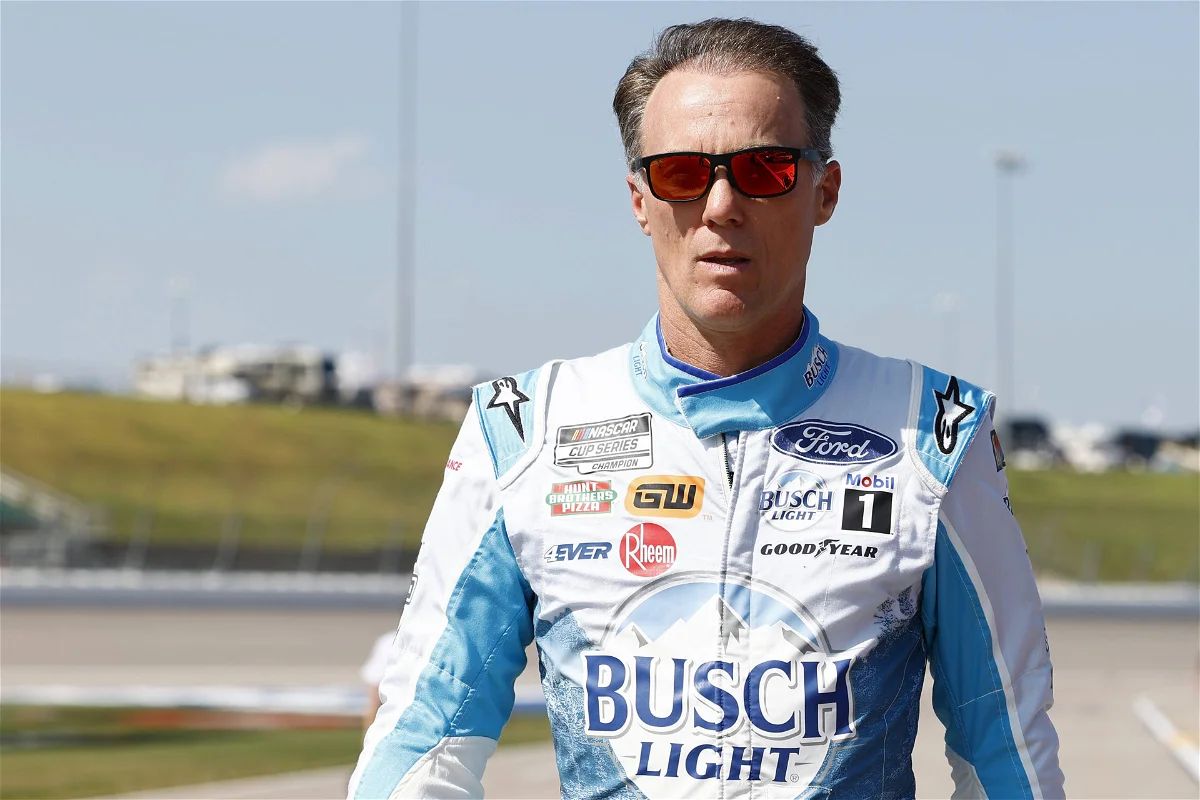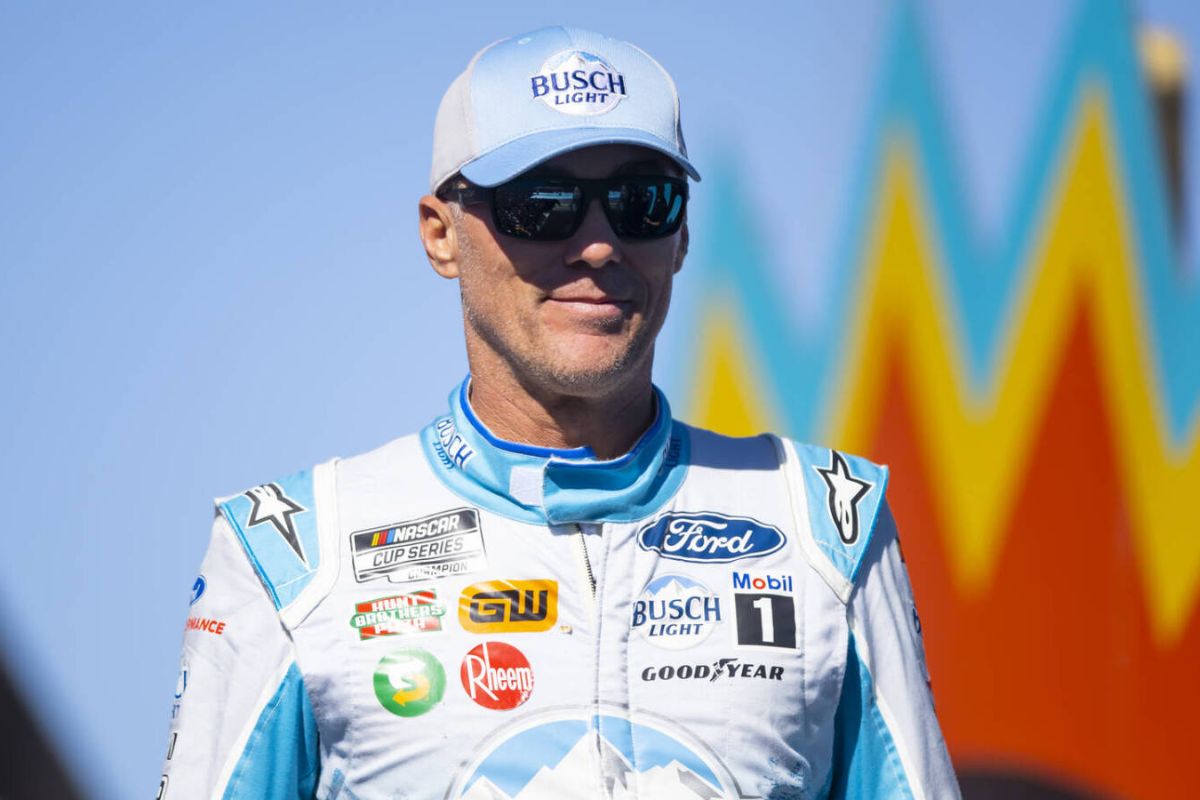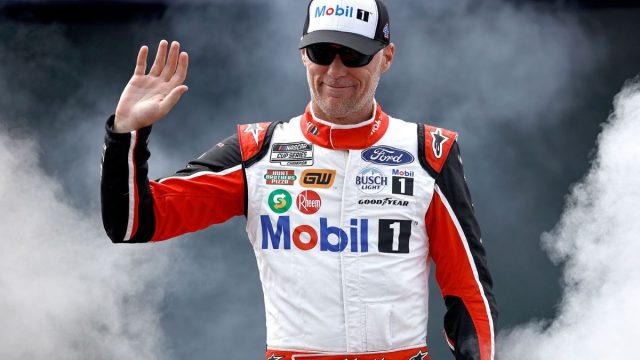Kevin Harvick Demands Pylon Return: In NASCAR, Kevin Harvick’s recent call for the return of the traditional scoring pylon at Talladega Superspeedway has sparked a broader discussion on how the sport balances modern advancements with its historical elements. Harvick, a seasoned driver with deep roots in the racing community, argues that the pylon is more than just a structural feature; it represents a cherished piece of NASCAR’s storied past. His stance raises crucial questions about the implications of technological change for the sport’s identity and the value of preserving such traditions in the face of relentless innovation.
Key Takeaways
- Kevin Harvick criticizes NASCAR for removing the iconic scoring pylon from Talladega Superspeedway.
- Harvick views the pylon as a cherished symbol of NASCAR tradition.
- He argues that the pylon’s removal undermines the connection to NASCAR’s historic moments.
- Harvick’s stance represents a broader concern among drivers and fans about losing traditional elements.
- The controversy highlights ongoing tensions between modernization efforts and preserving racing heritage.
Background
NASCAR’s decision to remove the iconic scoring pylon from the tri-oval track of Talladega Superspeedway, a longstanding tradition at the track, marks a significant shift in the sport’s presentation and has sparked widespread controversy among fans and drivers as well. This change is part of a broader trend where modernization efforts in the sport are clashing with traditional elements that have been cherished by generations of NASCAR enthusiasts. The scoring pylon, a towering structure displaying real-time race standings, has been more than just a functional element.
The removal of such an important feature raises questions about the balancing act between innovation and preservation within motorsports. As NASCAR seeks to attract a new audience and invest in technology upgrades, decisions like this could alienate long-time fans who see these traditions as integral to the race day experience. These fans argue that the traditional aspects of NASCAR, such as the scoring pylons, provide a unique connection to the history and heritage of the sport, creating a rich, immersive experience that modern digital displays may not replicate.
Moreover, this decision did not occur in isolation. Following a similar removal at Texas Motor Speedway, it appears there is a pattern of phasing out traditional elements across different circuits, which could suggest a strategic overhaul of how NASCAR presents its races.

Kevin Harvick’s Displeasure
Kevin Harvick, a seasoned Cup Series champion, has openly expressed his dissatisfaction regarding NASCAR’s recent decision to remove the traditional scoring pylon from Talladega Superspeedway. Harvick’s discontent stems not only from a sentimental attachment but also from his deep respect for the historical elements that have shaped NASCAR’s unique character.
“I wanna see the pylon back up in the infield. When it blows down, put it back up. Insure that baby, something, insure that baby, I don’t know. The pylon needs to go back up. Everybody likes to look at the pylon. How can you have a race track that when you leave, doesn’t have a pylon full of numbers on the finishing order? I can think back as to many of the races where you won where you just take a picture…it’s iconic,” (HARVICK)
Harvick’s encouragement for the pylon’s return goes beyond mere nostalgia; it highlights a broader concern about maintaining the integrity and continuity of NASCAR’s storied past. His arguments are supported by a recognition of the pylon as more than just an informational structure. Harvick’s position is that the pylon’s presence at Talladega is not just about utility but about upholding a legacy.
Importance to Fans and Drivers
Reflecting further on the pylon’s significance, both fans and drivers regard this iconic structure as essential during the thrill of qualifying sessions. The pylon, standing as a towering guide of real-time data, is not just a physical object but an integral part of the racing experience. Its presence during qualifying sessions underlines an important aspect of motorsport—accessibility of information. For fans, the pylon serves as a direct and immediate source of engagement, drawing them deeper into the subtleties of each race.
For drivers, the pylon is equally important. It acts as a quick reference point that informs them of their current standings and what they need to achieve next. This is particularly vital during the high-pressure moments of qualifying rounds, where every second and strategic decision can affect their placement in the race lineup.

Denny Hamlin’s Concerns
Denny Hamlin, echoing Kevin Harvick’s concerns, voiced his apprehension about the increasing trend of eliminating traditional pylons from racetracks, highlighting their sentimental and functional importance to the racing community.
“That’s what a race track is. I think taking these down it’s just not as good. Every time I go through a tunnel, and it might be just me, first thing I do is look at a scoring pylon to figure who’s where and what. So it’s a, I don’t know, maybe more of a sentimental thing from a purist like myself. But every track has its own ideas and we’ve seen it over time. It started with Bristol taking some out, then it was Watkins Glen, I noticed, obviously last week, and now this week. So, hopefully, it’s not a trend,” Hamlin
Hamlin’s plea to NASCAR is grounded in a profound connection to the sport’s history. He argues that the presence of pylons at racetracks does more than serve a practical function; it enriches the visceral experience of the race, evoking feelings of nostalgia and continuity among the racing community. This sentiment is not only shared by veteran drivers but is also cherished by a fan base that values the traditions which give the sport its unique character.

News in Brief: Kevin Harvick Demands Pylon Return
Kevin Harick’s call for the reinstatement of the scoring pylon at Talladega Superspeedway goes beyond mere nostalgia, highlighting an important debate within NASCAR regarding the preservation of tradition amid ongoing modernization.
This discussion reflects broader concerns within the community, resonating with fans and fellow drivers alike, and emphasizes the vital role that historical elements play in maintaining the cultural integrity and continuity of motorsports.
Therefore, it is important that NASCAR considers these perspectives in its future developments.
Our Reader’s Queries
Q: Does Kevin Harvick own a race team?
A: Kevin Harvick, Inc., commonly known as KHI, is a racing team founded by former NASCAR Cup Series driver Kevin Harvick and his wife DeLana. DeLana is the daughter of former Busch Series driver John Linville.
Q: What car does Kevin Harvick drive?
A: Kevin Michael Harvick, born on December 8, 1975, is an American stock car racing driver and commentator. He most recently competed full-time in the NASCAR Cup Series, piloting the No. 4 Ford Mustang for Stewart-Haas Racing.
Q: Has Kevin Harvick won this year?
A: Following his remarkable 2020 season, Harvick experienced a winless 2021 campaign, bringing an end to an impressive 11-season winning streak.
Also Read: toyota-at-talladega/”>Kevin Harvick Slams Toyota: Talladega Blunder Sparks Outrage!
